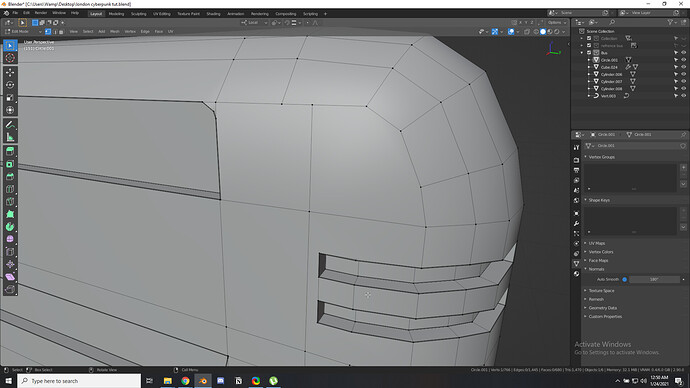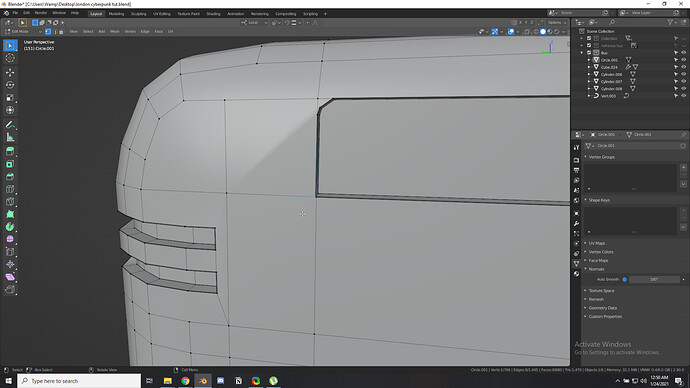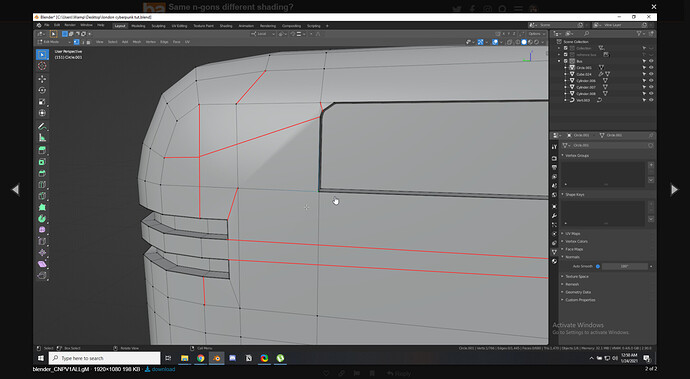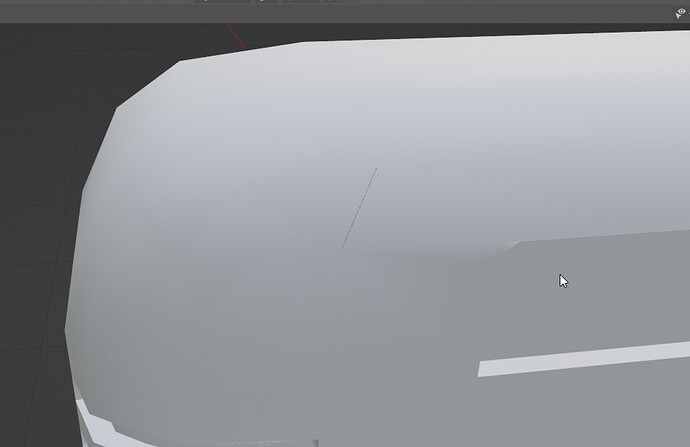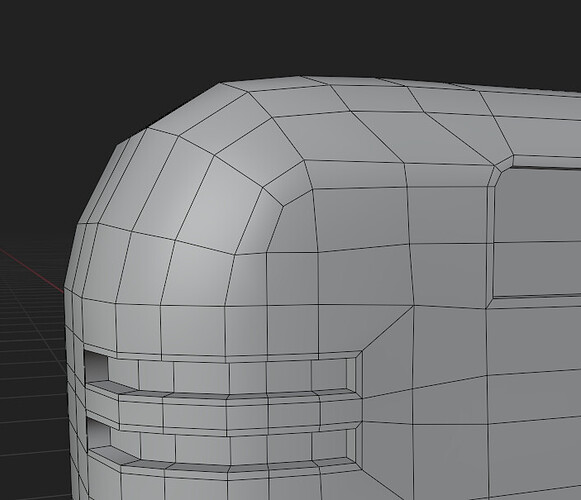So i have 2 n-gons on both sides that are kinda the same. yet the shading is different and i can’t seem to figure out why. I did try to add the extra edge on top in the same manner and im left with a big black edge after
london cyberpunk tut.blend (1.1 MB)
every 3d render engine to display any polygon that’s not a triangle needs to divide into triangles. It’s not predictable how N-gons will be divided and that is why your shading is messed up. It’s one of many reasons why not to use them.
An easy fix would be to just get rid of them
2 Likes
have you actually tried that? cause if you did you would know it doesn’t work well. Especially the edge on top leave me with this:
The problem here is not just arbitrary n-gon subdivision. It’s also normals. You have surfaces that bend in multiple directions there, so if your polygons are big and uneven around that area, so uneven would also be the interpolation of normals, thus shading. In general, on curved area transitions you cannot simultaneously keep super low polygon density and good shading. Something’s gotta give. You need more geometry there to define the shape and to direct the shading.
In this case, you might get away with something like this:
though that still won’t mask all the problems.
london cyberpunk tut.blend (224.5 KB)
PS. Being rude to someone offering advice isn’t the best tactic to keep getting advice.
Thanks a lot for this one!
Sorry for acting a little rude. I’m just tired for learning half day 3d and the other half coding. I don’t know how many frustrations per hour I’m getting already haha.
Btw, just so is on the topic. If everything gets converted into a triangle, why is considered best practice (from what i’ve heard) to use quads? Shouldn’t in theory be better to use only triangles as well? or is just a convenience or better for practical purposes to use quads?
1 Like
Quads are great because they provide a defined flow: for each edge there’s exactly one opposite edge. Technically that’s true for all even-sided polygons, but quads offer minimal ambiguity after triangles (you can only split a quad two ways, whereas there are multiple ways of splitting n-gons).
Numerous algorithms take advantage of that. Loops, rings, subdivision… It’s easy to define and control curvature with quads. So they are the best practical primitive for authoring.
Just imagine editing that mesh if all you had was triangles - no loop and ring selection, most always twice the polygons to select each time, no Loop Cut tool, no useful edge sliding, etc… Or, triangulate it and see what the Subdivision Surface would do with the shapes 
Yeah all those make a lot of sense. Thanks again!
